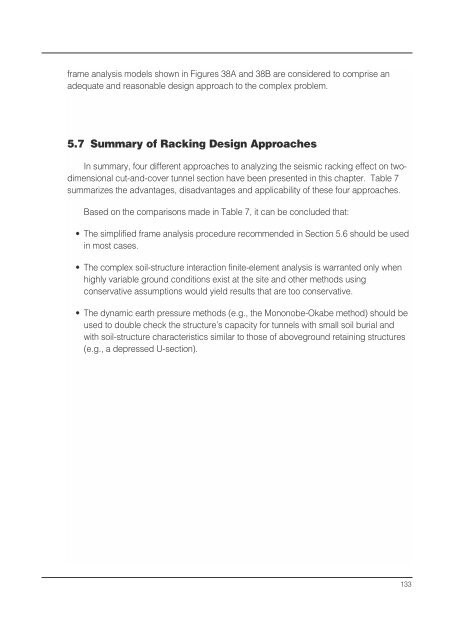Seismic Design of Tunnels - Parsons Brinckerhoff
Seismic Design of Tunnels - Parsons Brinckerhoff
Seismic Design of Tunnels - Parsons Brinckerhoff
Create successful ePaper yourself
Turn your PDF publications into a flip-book with our unique Google optimized e-Paper software.
frame analysis models shown in Figures 38A and 38B are considered to comprise an<br />
adequate and reasonable design approach to the complex problem.<br />
5.7 Summary <strong>of</strong> Racking <strong>Design</strong> Approaches<br />
In summary, four different approaches to analyzing the seismic racking effect on twodimensional<br />
cut-and-cover tunnel section have been presented in this chapter. Table 7<br />
summarizes the advantages, disadvantages and applicability <strong>of</strong> these four approaches.<br />
Based on the comparisons made in Table 7, it can be concluded that:<br />
• The simplified frame analysis procedure recommended in Section 5.6 should be used<br />
in most cases.<br />
• The complex soil-structure interaction finite-element analysis is warranted only when<br />
highly variable ground conditions exist at the site and other methods using<br />
conservative assumptions would yield results that are too conservative.<br />
• The dynamic earth pressure methods (e.g., the Mononobe-Okabe method) should be<br />
used to double check the structure’s capacity for tunnels with small soil burial and<br />
with soil-structure characteristics similar to those <strong>of</strong> aboveground retaining structures<br />
(e.g., a depressed U-section).<br />
133
















